Apparel Bracketing and the Blame Game of Retailers and Consumers
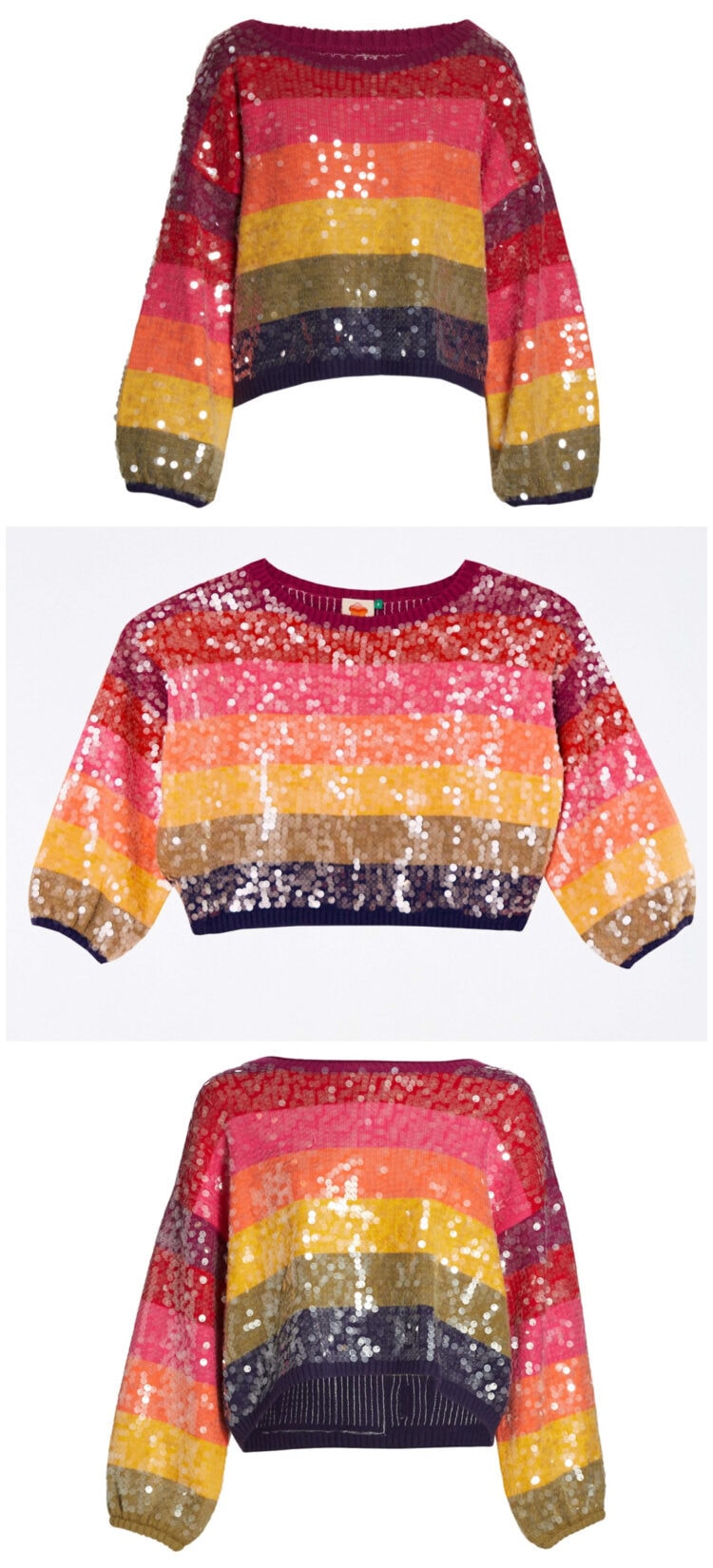
This post was originally published in 2021, but updated considering how many more articles about this topic have come out during this shopping season.
Apparel Bracketing and the Blame Game of Apparel Retailers and Consumers
I am going to continue a little rant I had in the Wardrobe Oxygen community. There are a lot of articles on reputable sites that are “hot takes” on how we as consumers are the reason for the problems with the supply chain, the reason retailers end up with so many returns they have to dispose of, the reason for a host of environmental and labor issues.
Sure, we consumers can shop less, shop with more care, and when it is possible (but not possible for many in this country for a whole host of reasons, and those reasons keep increasing) we can shop in person. We could reduce a lot of returns if we had up-to-date measurements for our bodies. But let's stop blaming ourselves for issues retailers could fix if they really gave a damn.
What is Apparel Bracketing?
My rant was inspired by this article in Business Insider about “bracketing.” The thing is, consumers have done this for as long as there have been online shopping. If this is a logistical nightmare for retailers, it's because they haven't pivoted their business model to either accommodate for it or help prevent it.
Bracketing is buying more than one size or color and returning what wasn't needed. I have “bracketed” apparel purchases. Hell, I have been bracketing for over a decade. I have ordered two sizes of the same item, two different colors, or three different styles of a similar garment and returned the ones that didn't make the cut. And I know I am not the only one (hence having this article exist).
Why Consumers Bracket their Online Orders and Why It's Not Their Fault
But it's not like I want to do it, I am forced to because retailers don't offer enough information on their sites to make me a confident consumer. Considering shopping and researching apparel is literally my job and I struggle so much that I bracket orders, I can confidently say it's not a consumer problem, it's a retailer problem.
Vague product descriptions. Size charts that are inaccurate, missing, or too general for the entire site instead of individual products. Products on models that are twisted like pretzels, the clothes obviously pinned in back for better fit, the image filtered to the point you have no idea if that dress is black, navy, or dark green. And the name of the color is something like “Dramatic” or “Gloria” which doesn't help. Fabric stated as being 100% polyester, not giving enough information to know whether the fabric is matte, shiny, rigid, stretchy, transparent, or opaque.
Some sites try to help by saying, “Model is wearing size 6.” That's great, but that model is standing in front of a white backdrop and I can't tell if she's 5'6″ or 6'5″ tall. What is her waist measurement? What is her inseam? What are the pants' inseam? And can we get a side and back view of that size 6 model without her wrapping her arms around her body or leaping in the air or squatting on the ground?
Example: My Research and Purchase of a FARM Rio Sweater
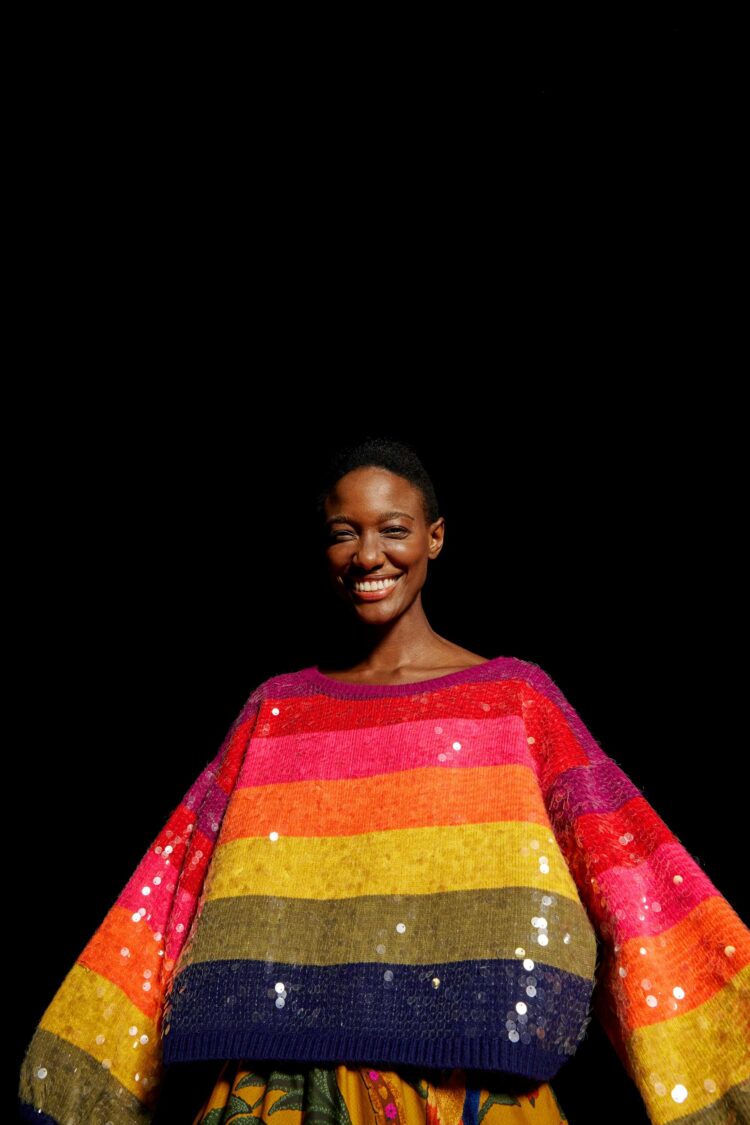
As a reminder, this post is from 2021 and these items are not still available. However, with recent shopping of this brand and these online stores, I know this issue hasn't been resolved. In fact, I think it is even more of an issue.
Let's take as an example, this sweater from FARM Rio. I first saw the sweater on Instagram with the image above. I was drawn to it, but I couldn't really tell how it fit, if the sequins were colored or the sweater, if it was a boatneck… so I went to the FARM Rio site to learn more.
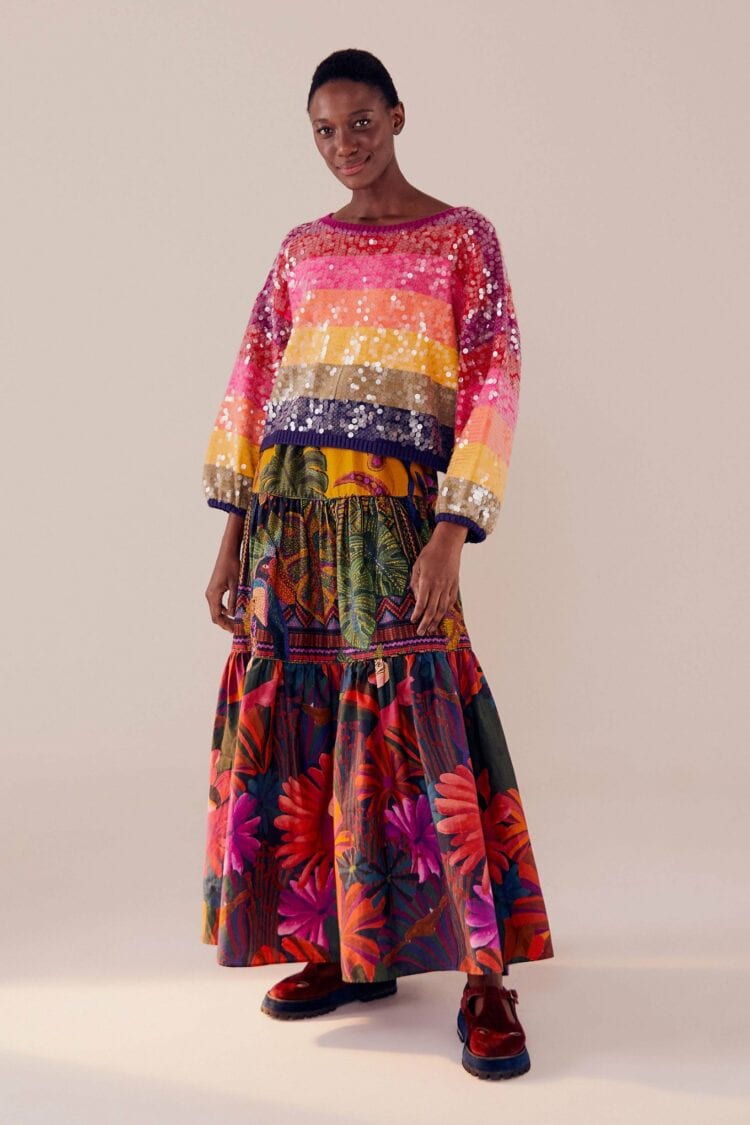
Along with the photo above, I also see this image above, which is the same model, in the same sweater, and even the same skirt. But the lighting is so different the sweater looks like a completely different garment. It also appears to have shorter and less full of sleeves. This angle in the photo shows the sweater is cropped and maybe not as slouchy of a fit. I am now really confused… do I even like this sweater? I find FARM Rio runs big but I want my sweater to fit like the first photo, not the second, should I size up? Will I even like this IRL?
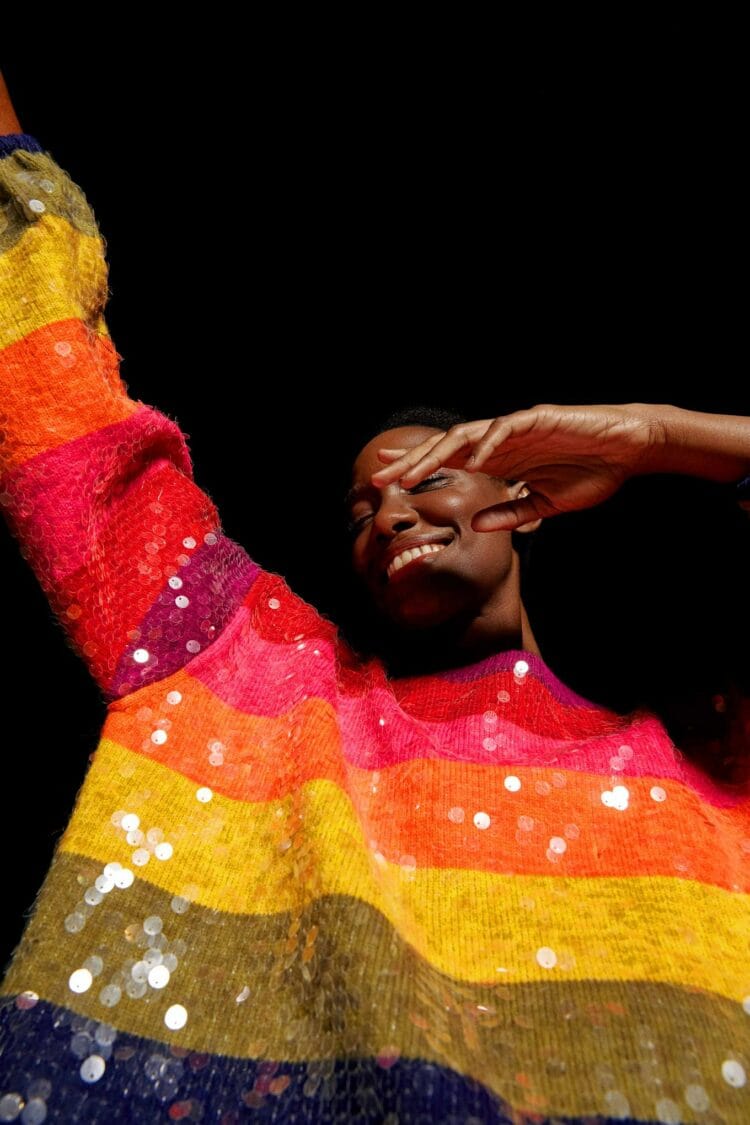
I check out the FARM Rio size chart and am informed that a Large is a 12/14. In the sweater product description, FARM Rio states this model is wearing a size Small, and it supposedly fits true to size. FARM Rio shares this 65% acrylic, 25% polyamide, 10% wool sweater embellished with sequins can be machine washed and tumble dried on low but it also says line dry? I really wish a year later I took screenshots of this confusing product description!
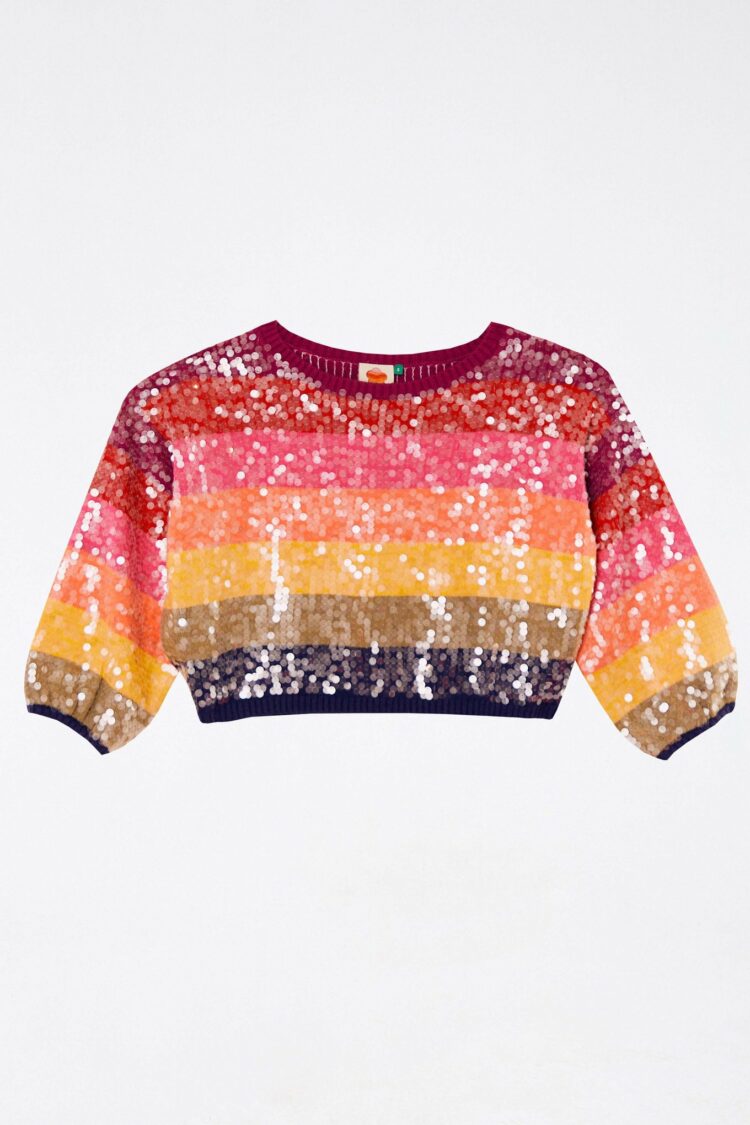
FARM Rio states this sweater has an “easy, relaxed fit”, is cropped, and has a round neck. The size chart for the specific garment says a large is 20″ long and an XL is 20.5″ long. It shares bust and waist size, but that isn't super helpful since this is an “easy, relaxed fit” but at least it's something…
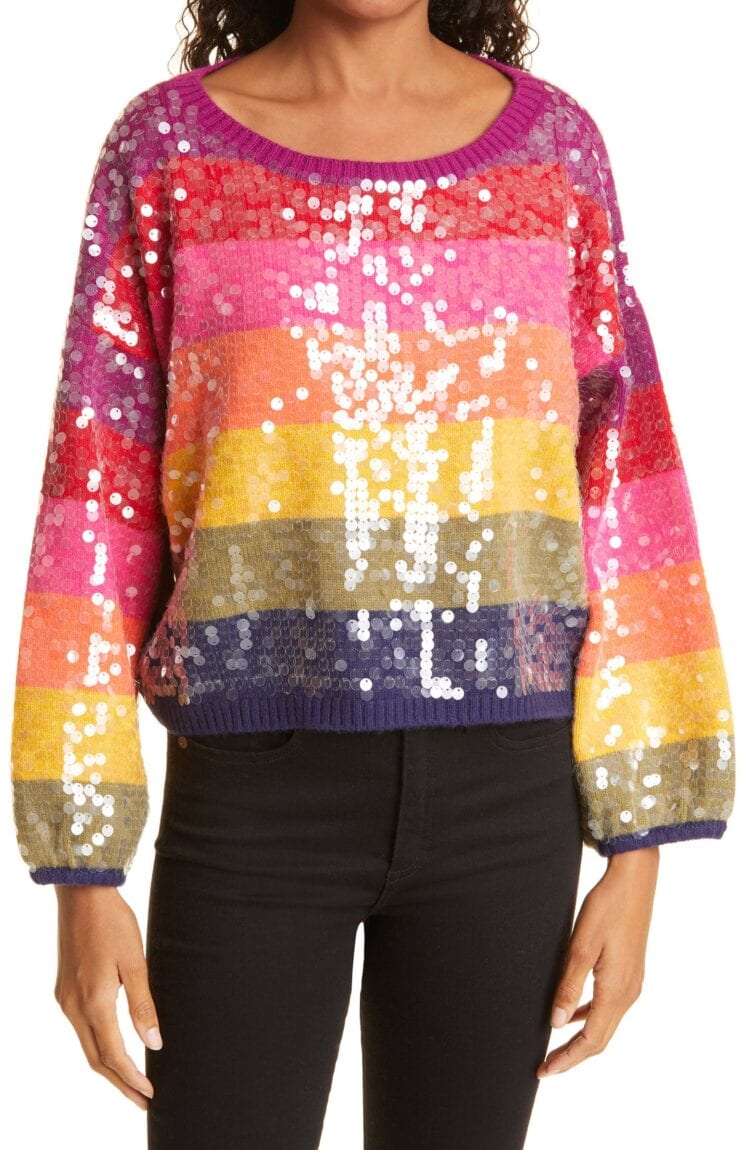
Then when writing this post about how to glam up your existing wardrobe for the holidays, I came across the same FARM Rio sweater on the Nordstrom site. Nordstrom continues to improve their online shopping experience, by offering multiple angles of garments both on and off models, videos of salespeople sharing the garment so you can see how it hangs and get styling tips, and plenty of customer reviews to get a better idea of how the garment wears.
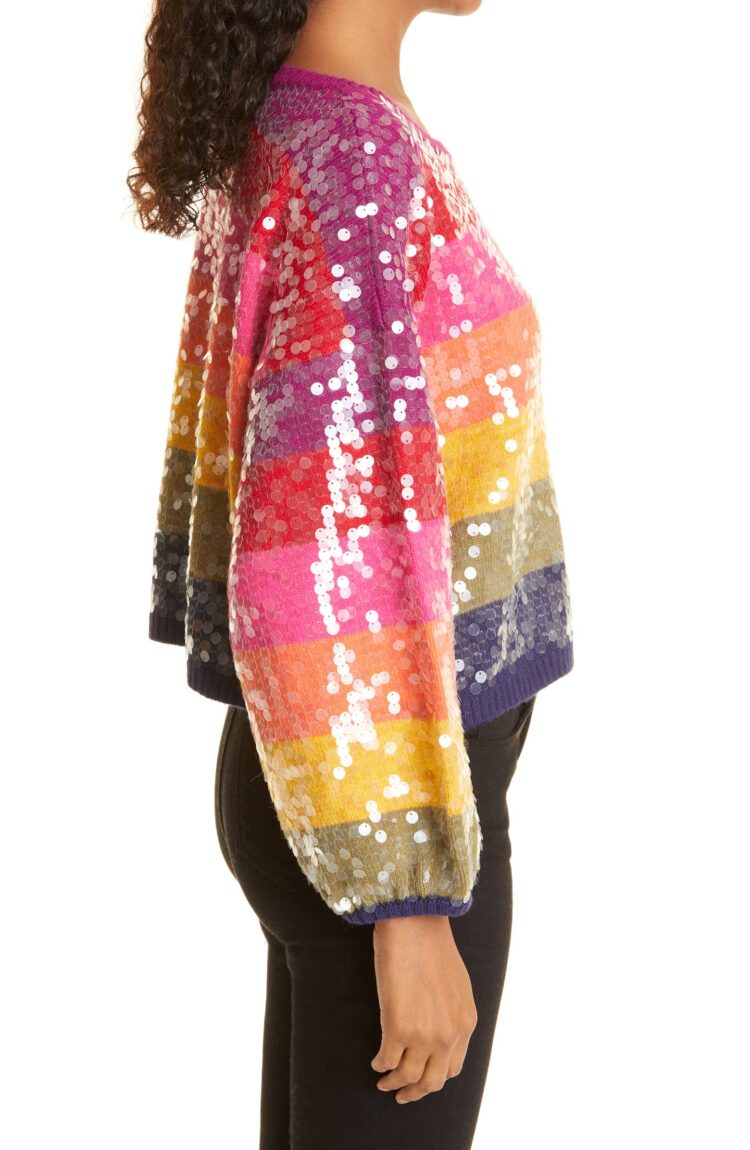
Anyway, this same exact sweater on the Nordstrom site is 65% acrylic, 25% nylon, 10% wool, and says to hand wash and dry flat. It shares that a size Medium sweater is 20″ long. But the FARM Rio site says a Medium is 19.5″ long. The video Nordstrom shares helps me realize the neckline is round, but it very well may end up off the shoulder or at least wide on most bodies. The photo above of the side angle helps me envision what length it may be on my shorter and curvier frame.
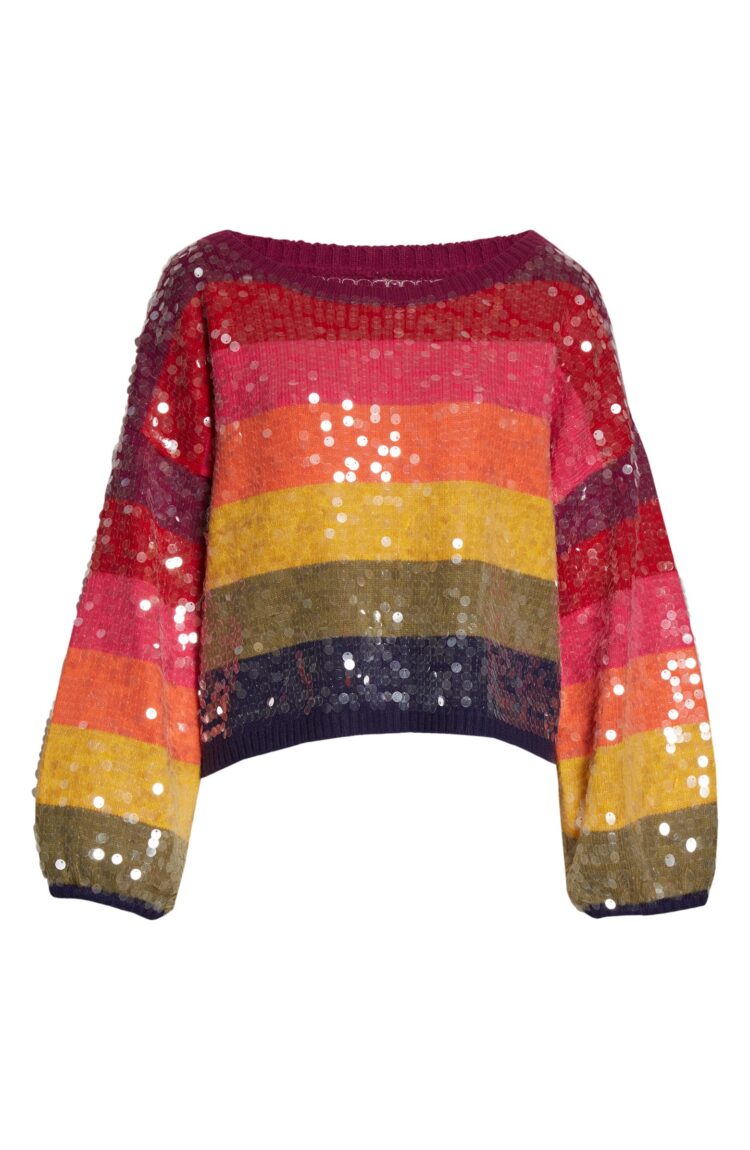
Nordstrom offered six photos and one video of the sweater, including back and side views and a closeup of the fabric so I felt I could be an informed consumer. However, I was still not sure about length and sized up to an XL just in case. After purchasing, I realized I likely would have preferred a Large. I seriously considered “bracketing” this order, but with a sweater so costly I didn't want that much temporarily missing from my bank account or on my credit card. I bought from Nordstrom, not FARM Rio because Nordstrom put more effort into informing consumers.
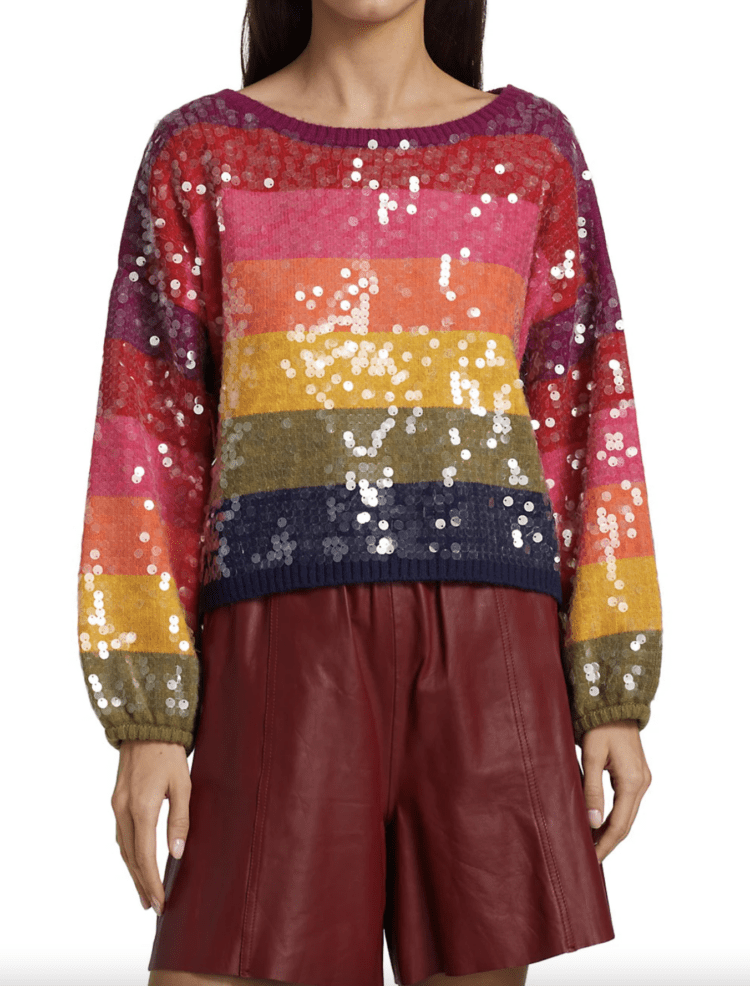
When I wore the sweater this week and shared it on Instagram, I went to see which retailer had the most sizes available. FARM Rio was almost sold out in every size; Nordstrom still had a full-size range but shared they were low stock for the larger sizes. I also found the sweater at Saks Fifth Avenue. While the retailer didn't have larger sizes in stock, it did have a completely different set of photos and a different description for this sweater.
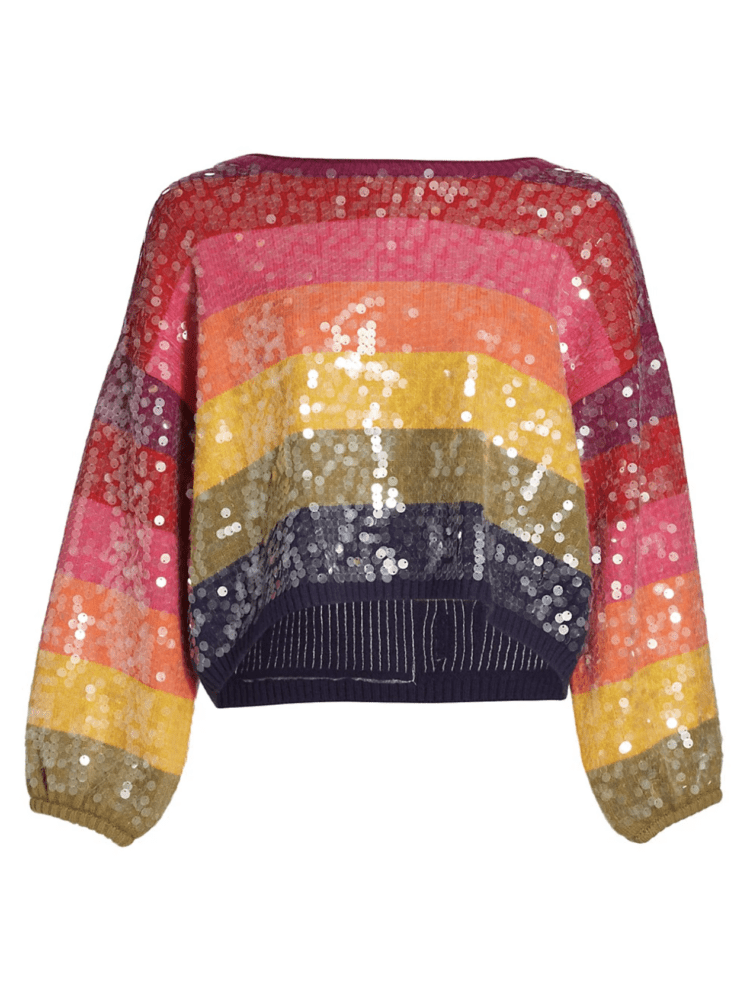
Saks called the neckline bateau which I think is a better term than what FARM Rio and Nordstrom used. Saks shared the model was 5'10” tall, wearing a size small, and the sweater was 19.5″ long (a half inch longer than the FARM Rio size chart states for this size). Saks also says this sweater should be hand washed. Saks offered seven photos of the sweater with lighting that looked a bit between Nordstrom and FARM Rio's black-background shots.
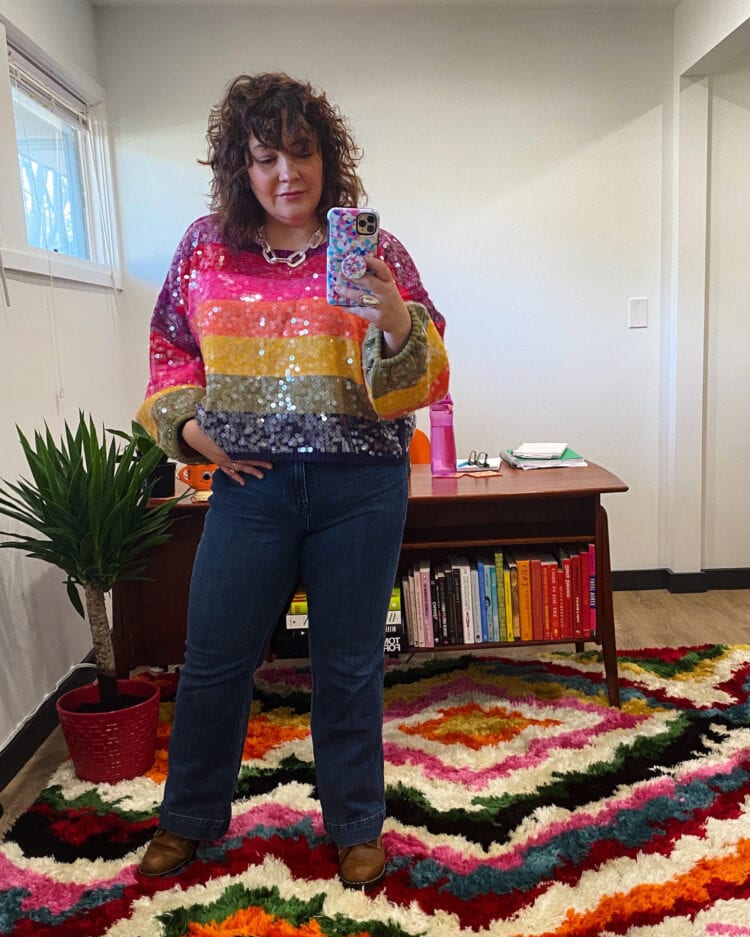
How to Reduce This Trend of Apparel Bracketing
If I found a novelty sweater this confusing to purchase online, imagine how difficult it is to purchase jeans, or bras, or swimsuits, or shoes. Shopping in person isn't possible for the vast majority of Americans due to location, transportation, ability, schedule, health, and many many more reasons. And if you are lucky enough to live somewhere with lots of shopping options, likely those stores don't carry the complete size range, color, or product selection.
If you feel that I link to Nordstrom a lot on this blog, this is why. Nordstrom's buyers may have switched their direction and now focus on “influencer fashion,” but their site keeps updating to cater to those online consumers who follow influencers. I don't find benefit in linking to a product that you may return because you didn't get what you expected. Even “bracketing” hurts me financially because something will be returned.
You may also like: how blogs and influencers make money
I also link often to retailers like Boden, Lands' End, J. Crew, and Universal Standard which offer some styles for longer than a month. Having staples available beyond one season means that even if we consumers “bracket” our orders, the pieces we return are still of value to the retailers. It also means I can wear and re-wear an item, consumers can see the same garment on me as well as other influencers and different site models over the seasons to get a better feel for how it may fit on their bodies or how it will hold up over time.
Brands are dealing with the ramifications of bracketing because their sites aren't keeping up with customer demand. If retailers invested in their sites with detailed descriptions including sleeve and rise length, more photos and video, unfiltered customer reviews, live chat function with individuals who actually know enough to answer questions, and return windows that fit the turnover of their products, they'd have fewer returns.
But such changes cost money, and take time to see a return on investment. Considering how few companies are willing to make such an investment to extend their size ranges, I don't see most retailers making any effort anytime soon to fix the problems they have created and happily blame on their consumers.

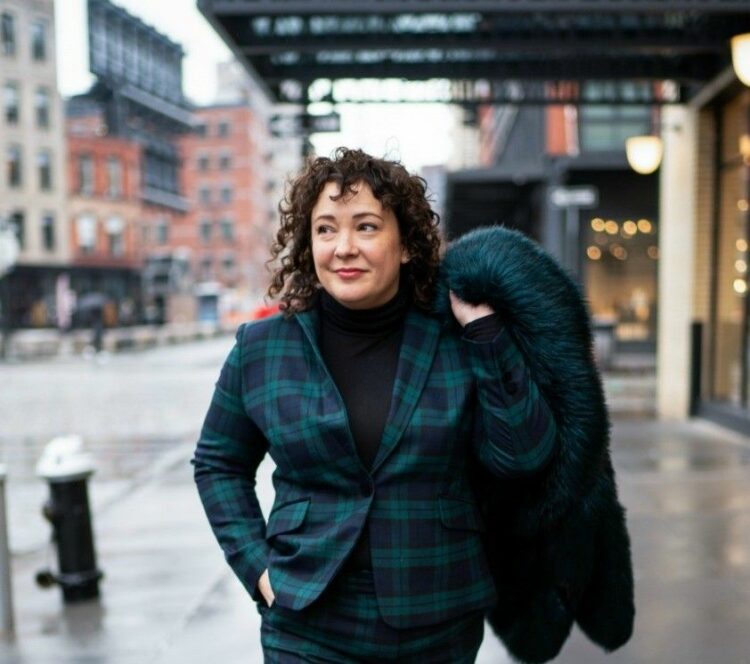
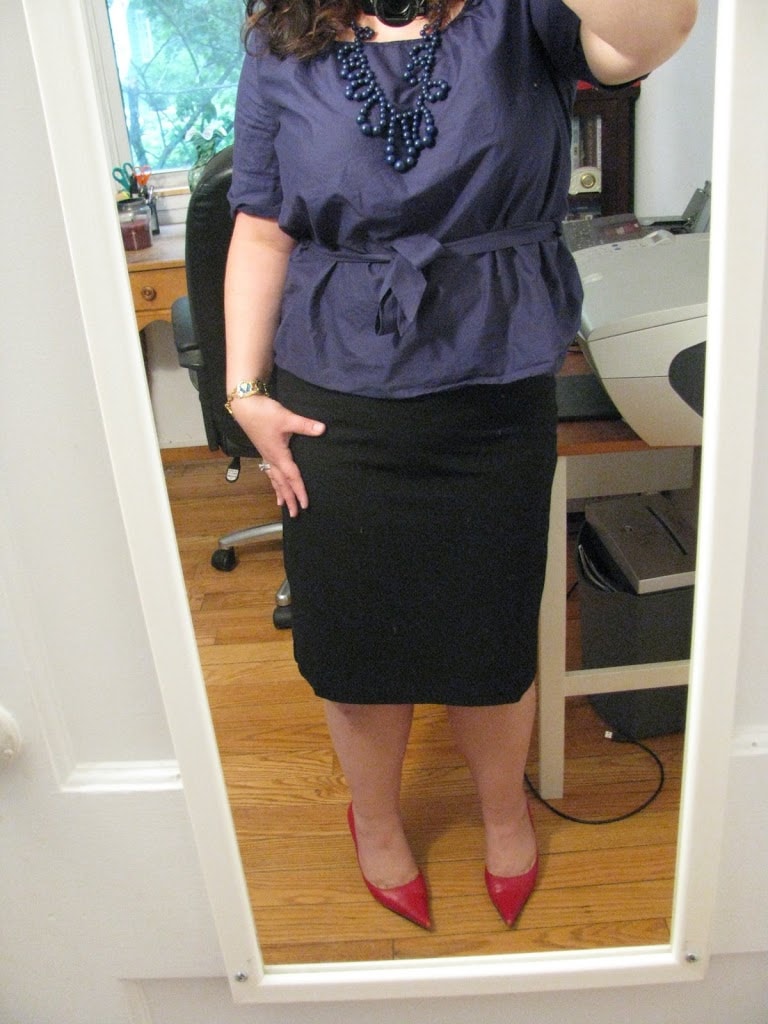
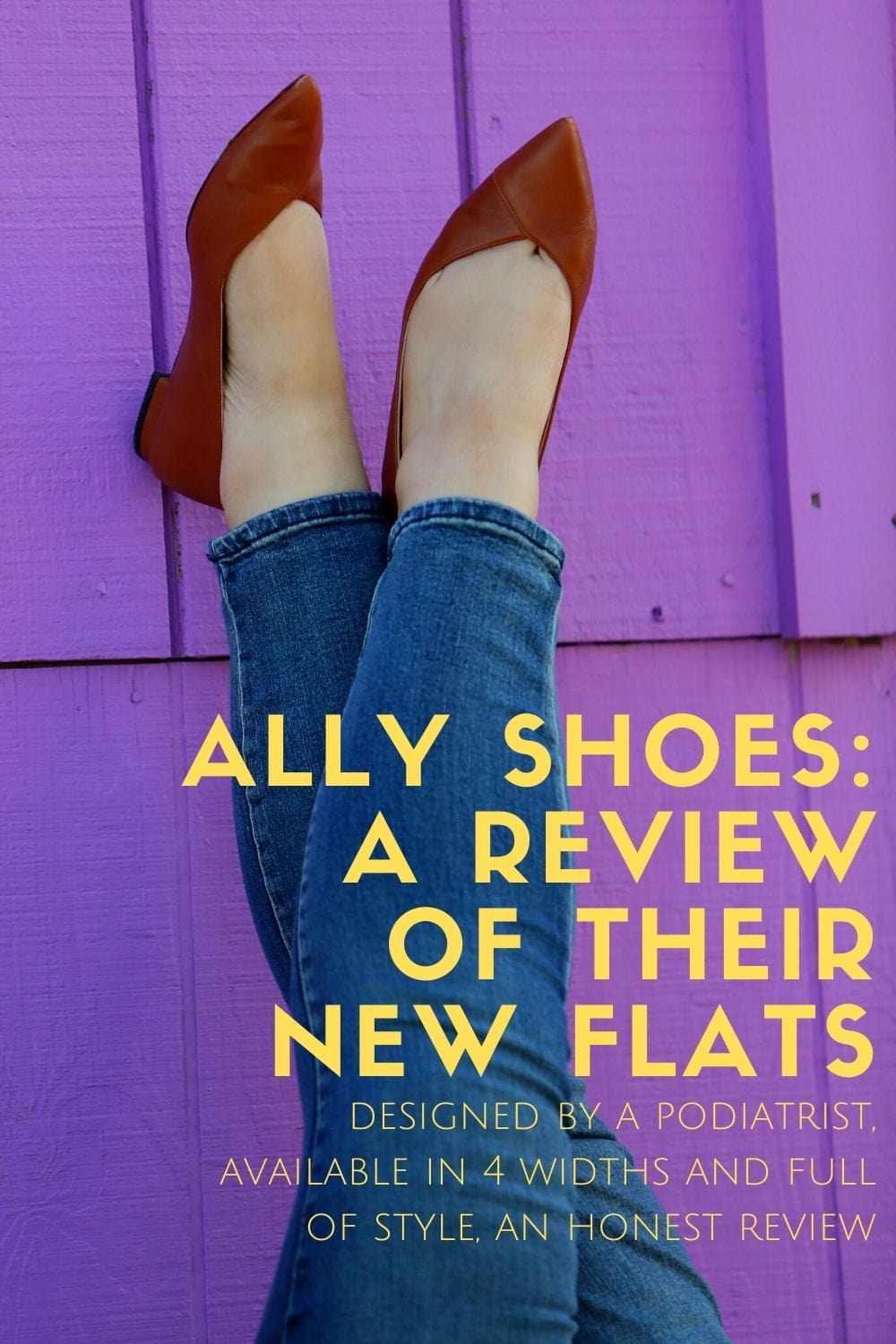
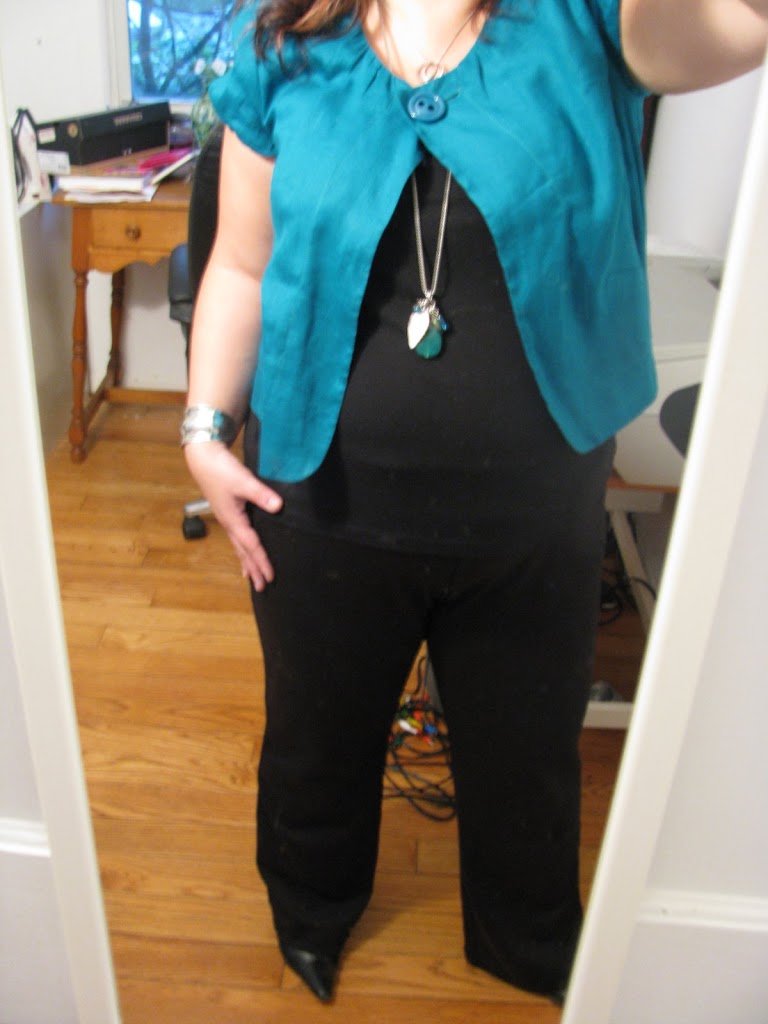
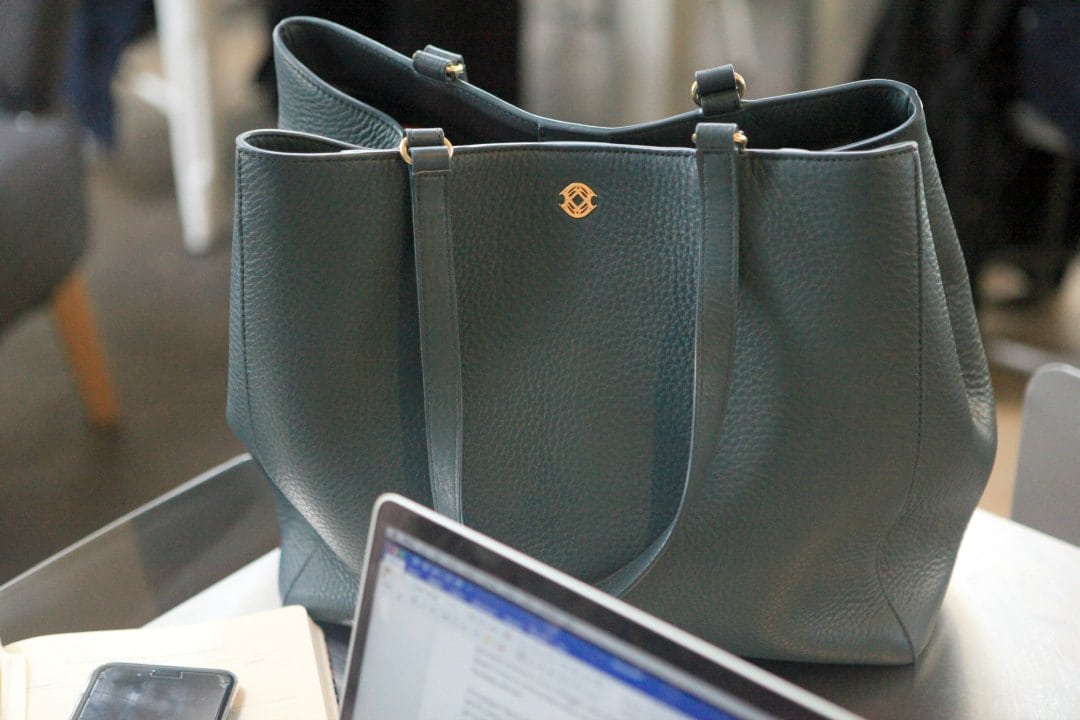
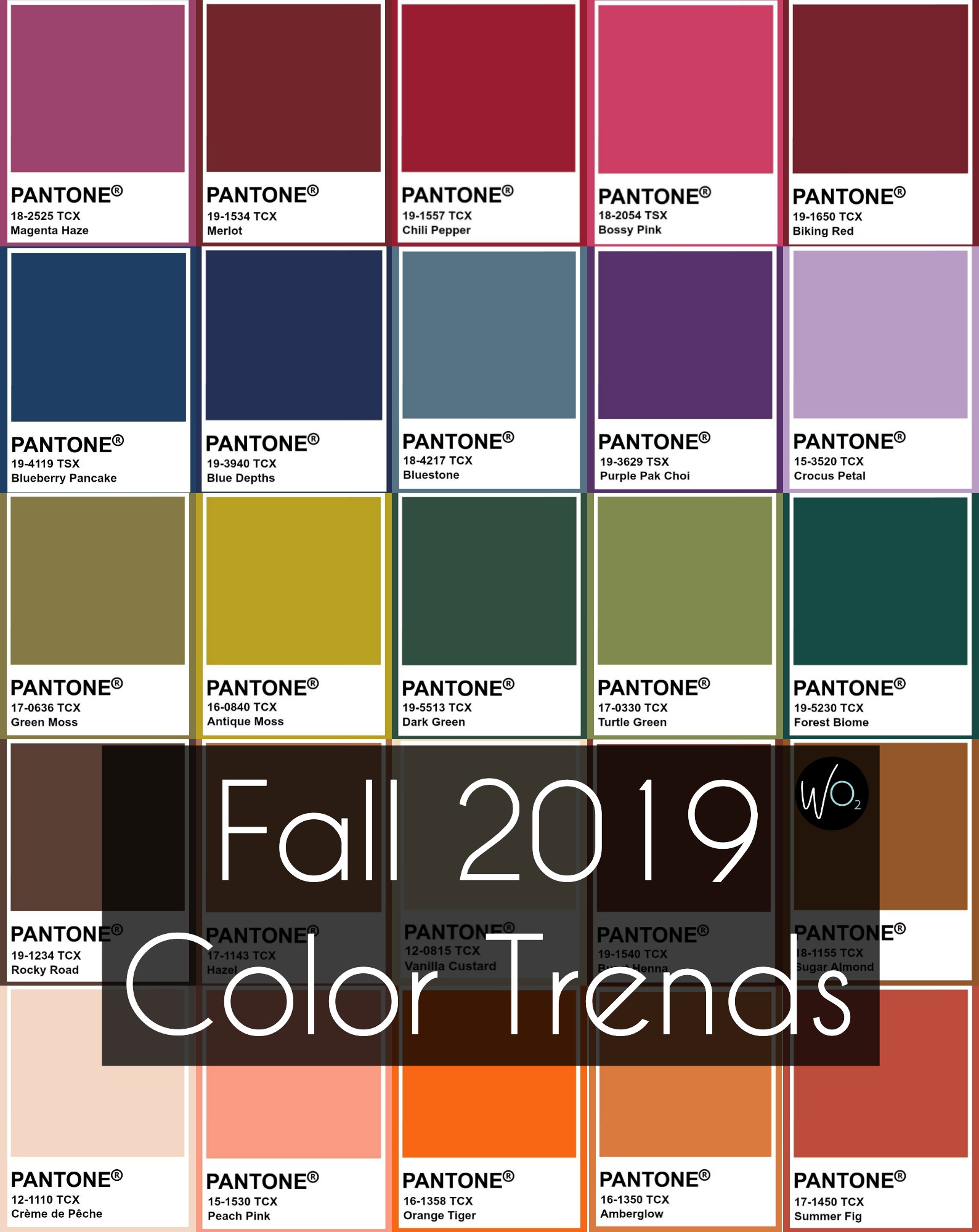
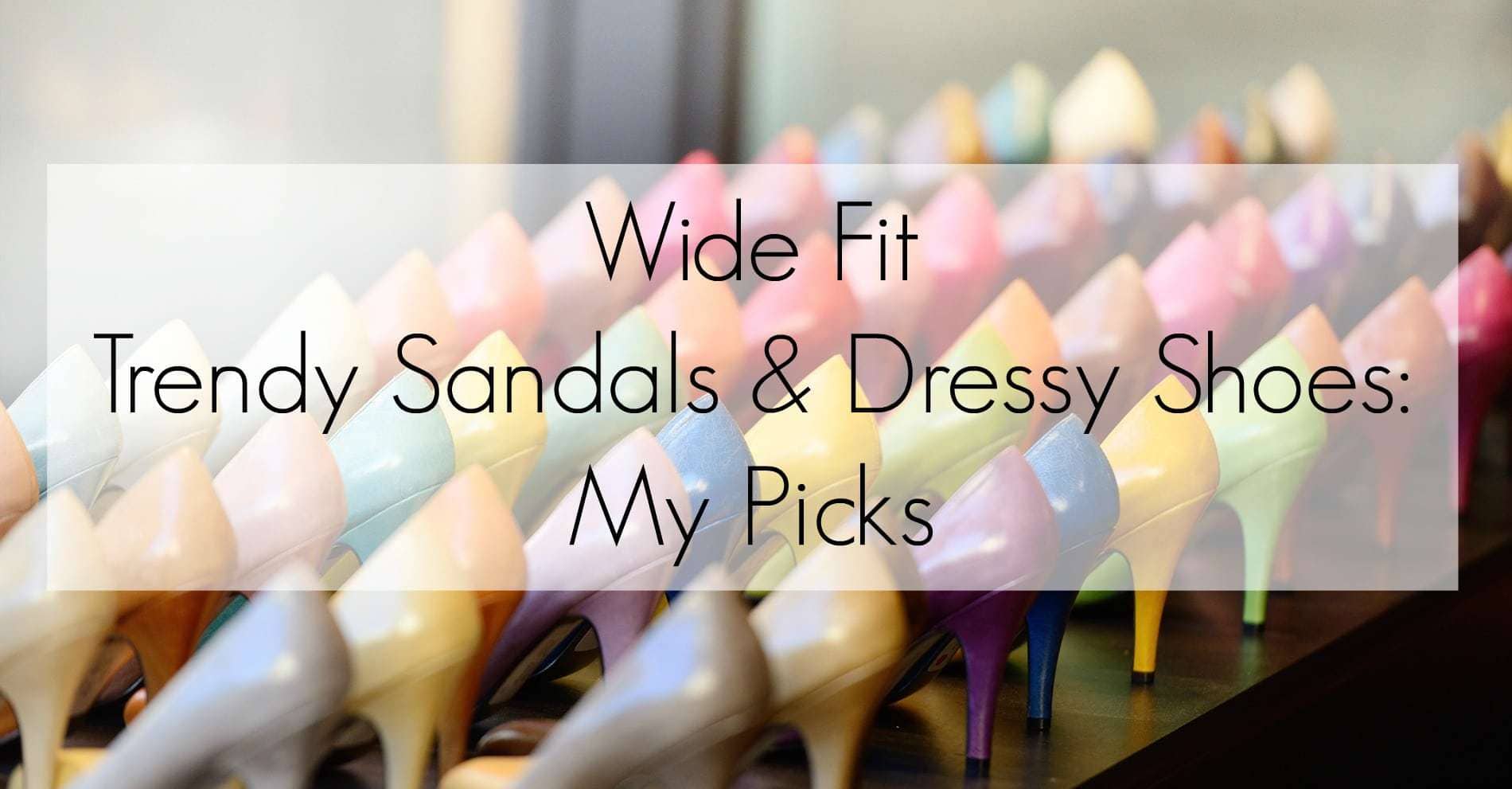
Thank you for banging the drum about bracketing. Worries about fit and fabric often times keeps me from buying more fitted or defined garment styles.
This is such a great piece. And I thought of you today when I ordered a pair of shoes in three different sizes, LOL. There was one left of each size and I know I’ll like the shoes. Therefore, to actually find the one that fits, while it’s in stock, I had to size bracket. Do I feel guilty for the environmental impact? Yes. Is there a local edition of this store where I could possibly find size 10.5 shoes in stock? No.
Yes to all of this, including the comments! Shopping for clothes is incredibly frustrating when the descriptions & pictures are so poorly done. And, telling us to shop in person & try things on—ummm, where would we do that? I live in a rural state, in the largest city. Within the past 2 years, the following stores have closed here: J Crew, Madewell, Gap, & Banana Republic. We do not have Nordstrom’s, just Dillard’s (which I don’t like as well). In the past when I ordered online from these places, I did so knowing I could return in-store. And, to be honest, I often exchanged for the correct size and/or ended up buying other items while I was there. Can’t do that anymore, so I’m left with making my best guesses when ordering online & trying to buy from places with free returns.
I recently heard that some companies are starting to charge for returns. It’s another frustrating development when you can’t predict how something will fit. Another thing I’ve noticed recently is Madewell in particular making sale price purchases FINAL sale. This isn’t just for merchandise they’re clearing out. After the sale period, they have been offered at full price again. I was foolish enough to go ahead with an order for some jeans and now have a pair that is nowhere near my size. Lesson learned!
As always, great article that gets me thinking and helps me realize I’m not alone!
I would add that I would go try things on in person if retailers would stop eliminating plus departments. In Atlanta, a big city, the Nordstrom and Saks got rid of theirs. Macy’s has theirs in the store close to me. Guess I should be grateful. It’s hard to determine size and fits from a picture.
>>…And can we get a side and back view of that size 6 model without her wrapping her arms around her body or leaping in the air or squatting on the ground?
LOL. Exactly. But you forgot my #1 pet peeve — long hair that covers the neckline of a top or jacket. Good lord.
I see no solution to everything you describe. Just this month, I was trying to buy a relatively expensive handbag online. Each major retailer, plus the maker, had a different description of the bag. Photos varied in color (and color name! Um, let’s see, let’s rename the color to what WE think it should be called?!). Only one site showed the bag being carried by a person. There was a lot of variation in the stated measurements, and NOT ONE SITE provided info on the length of the crossbody strap (including the maker!).
So, I finally chose the cheapest combination of price and points and shipping. When the bag arrived, I found the department store had posted the wrong photos and I got the wrong bag.
This repeats a million times per day, all over the nation. It’s why I see no solution. Retailers simply do not care. Therefore, I don’t care if they go out of business.
Oh, I forgot the piece de resistance. When I called the store to say I’d rec’d the wrong bag and that their online photos were wrong, I got the usual customer service rep who could not view the item and was not empowered to fix things. A month later, the wrong photos are still on the website, and despite two reviewers (me, and another person who also rec’d the wrong bag) calling attention to this, I can guarantee others are still ordering and receiving the wrong bag.
I’m one of those people who read your and others’ fashion blogs but seldom order items from them. I feel like I’m freeloading, but ordering online is so problematic for me that I don’t bother. Your post explains why. I’m petite and tend to weigh more than my ideal weight, plus I don’t like to return things so don’t consider bracketing to be a good choice for me. Also, I’ve heard of the lazy practice of retailers trashing returns, and I don’t want to contribute to that situation at all. Thanks for voicing the problems consumers have with many retailers’ sites. Maybe some will sit up and pay attention to make needed changes.
Nordstrom is the best at showing clothing from the front, side, back, neckline, close up of the fabric, etc. I do dislike that they only show videos of someone holding the garment, as I think videos of someone wearing it are more useful.
My pet peeve is when a site has like 9 photos of something from various angles, but the 9 photos are all of the item in black. You can’t see any details in black. Then you go to see what it looks like in red or white or tan, and they only have ONE photo in that color. Ergh!!!
I realize shoes are a bit different, but Zappos is outstanding at showing photos from umpteen angles for EVERY color the shoe comes in.
Even with the retailers who are making somewhat of an effort to show garments modeled in a range of sizes, every model is 5’10 or thereabouts. The average height for an adult woman in the US is 5’4”. How are women to have any idea how an item would look on someone who is not a half foot above the average? Size diversity should include height diversity. Also, the inseams on so many pants are ridiculous. The short and petite inseams this year are often 31”. Retailers are way out of touch with actual size of women and the fact that heels are rare as hen’s teeth after the pandemic reordering. And don’t even get me started on all the clothes that require a “speciality” bra rather than ye old faithful . . . .
Thanks so much for this post, Alison! I agree with other commenters, the sweater looks fantastic on you.
Bracketing is here to stay, for all the reasons you and the other commenters have mentioned.
It seems like the things we can do to help the situation are:
1. Return immediately
2. Post reviews to help other shoppers. I especially appreciate photos or descriptions of how clothes fit different frames. I’m not at all shaped like a model –curves and muscles both–and find that some things look much better and others look much worse on my figure than as shown.
Thanks for an informative read.
-Elizabeth
Love that sweater on you! I often bracket online orders for size and length. I don’t know of any retailers that carry tall or long lengths in store.
Unless all retailers agree to consistent sizing, this practice will continue. At the risk of losing my privacy, I am willing for retailer to use my laptop camera to scan and figure out what size will work best for me.
So great to hear the other side of this – I feel a bit sick when I think about the environmental/resource cost of clothing my body in items that fit and I feel comfortable wearing. But all of this cannot be laid at an individual’s door.
Yes to this, especially the dumb poses they have the models in. How can I see how a piece of clothing fits if the model is squatting or doing something weird! It drives me crazy. Retailers need to get it together.
One way we can help each other with this is to write reviews and to post photos of the clothes. I find it so helpful when real people post photos of themselves wearing the clothes in reviews. I usually look for those kind of photos right away before purchasing. When I purchase clothes, I also try to write a review that describes the fabric, fit, etc. Sometimes I also post reviews of clothes I tried on or saw in the store but didn’t end up purchasing (such as when the fabric is horribly stiff, scratchy, etc.) My hope is that this helps other people shopping online.
Inconsistent sizing: been there, done that. I tried 2 different style vests on at a LLBean store, same size. One was perfect and the other way too big. How can you be successful shopping online?
Life would be easier if there was a size mandate across all of fashion. Every manufacturer’s size 2 should be the same. Every manufacturer’s size 18 should be the same. I don’t mean it has to be the same garment. I mean that if someone is a size 10, they should be able to order a size 10 from any manufacturer knowing that it will fit. But even manufacturers/retailers aren’t the same. Walk into Gap and grab multiple pairs of the exact same jeans – same style, same color, same size. Every single one will fit you differently. It’s enough to drive someone mad.
Agreed, agreed, agreed.
Yes to the last part – I assume this is the result of cutting corners (literally!) on the clothing patterns (stacking them up on one another to make fewer cuts to the fabric)…
Amen. And honestly, the onus is on the retailer to figure out how to properly handle returns. It’s their product, their profit margin, their reputation – they can figure it out. It’s not rocket science.
Great post, I always feel guilty returning bracketed purchases and often comment on it during the return. I realize the poor sales staff isn’t in control and just have to take the return.
Maybe it is cheaper for the retailer to process returns than to keep the inventory in stores due to inventory costs. I am really tired of getting the message; “not available in a store near you” and I I live in big city
I just ordered 2 beautiful and not inexpensive cashmere sweaters because I was’t sure which size was best. And, of course, one is going back.
I agree, this is a retailer issue, not consumer.
I want to know the dimensions of the garment itself, not the size of the person it “should” fit.
Part of my job is writing descriptions for e-commerce. I was once told to describe each piece as if the purchaser had no picture available. It may be obvious to me, who has been working with the product for months that it’s black, not navy, but I write the color anyway!
I think that is a great way to do descriptions, because not only is it helpful to all consumers but it’s helpful to those who have vision impairment!
YES TO GARMENT DIMENSIONS!! I can’t believe we went through the last year or longer partly not even able to shop in stores, and there are still only 2 retailers I can name off the top of my head that I know provide garment dimensions for online shoppers. (Boden and Lands End)
If it helps you at all, Everlane and Uniqlo both do this as well. At J. Crew you used to be able to chat with customer service and get the dimensions, but it seems like they have done away with that. Uniqlo has length shortening available on some items, but if you DO choose a shortened length, you then cannot return it, even if the other parts of the garment do not fit you!! What is that about??
Yep, just did this with a shirt from Old Navy. Reviews said to size down, but as a larger person, sizing down always makes me nervous. There’s an Old Navy close to me, so I didn’t mind to go to the store to try it on, but it’s not in stock in the store.
Regarding pictures, I hate when they *only* show a flat lay. I need to see what it looks like on! At least some sites (Old Navy and Madewell I’ve noticed) will now let you choose what size model to see it on. That is helpful.
Thanks for this post!
This was so good. I definitely try to avoid bracketing my orders most of the time but it can be hard. What’s ended up happening is that I buy only from a few companies that I feel like I know well and I tend to only buy after eyeing something for several months stalking reviews, instagram photos, etc. I rarely shop in person as I try to focus on more ethical/small/natural fiber stores which can make things really hard. I have never thought of this from an influencer POV however, and continue to be amazed at all the work that goes on behind the scenes.
This is classic! Great post, Alison.
Interestingly, I often buy Eileen Fisher clothing on ebay or poshmark and appreciate the care that sellers take in photographing the actual item you will receive, adding its measurements, a shot of the fabric and care label, and often an honest appraisal of fit.
In the old days, I could rely on always wearing an EF Large. Nowadays, the sizing is all over the map. I thought I’d get helpful info by calling customer service, and instead they directed me to a store that carried the item that could measure for me. Seriously? If the company HQ doesn’t know the measurements, asking a retail store to measure takes the cake!
I second all the comments that said this should go viral. It should go viral to every retailer selling clothing online. Post-COVID many of us live in areas where most of the brick and mortar stores are gone. Of course we have to order one item in two or three sizes because sizing, even within one retailer, is all over the place. It’s all we can do. Your sweater story illustrates the point perfectly!
Well said and timely.
This post is so timely. I just ordered a sweater that is heavily advertised on my Instagram. Their sizing on the website was not helpful at all. They only gave measurements for the small that the model was wearing. How was that helpful? I did end up ordering but had thought about ordering two sizes so that I could find the best fit for me.
I also keep considering farmrio ..
I’ve been reluctant to order on-line at all because I’m tired of playing “guess the size” all the time. It drives me crazy that sites won’t even give the inseam for a pair of pants! I live in an area with really high COVID rates and really low mask wearing rates (hmm… maybe these things are related…) so I’m not about to purchase something that needs alterations of any kind right now. I love it when there are lots of reviews and people are kind enough to give their height and weight. I can search on 5’0″ and that will at least give me a starting point to figure out if I should size up or down on something.
Regarding the pretzel – my pet peeve is models that are squatting like they are peeing in the woods while they are looking you in the eye. They seem to be everywhere lately.
Great piece. Next I would love to know what individual retailers – eg Lands End, Boden- do with their returns. Do they resell or go straight to landfill? Because the latter is very distressing
I laughed out loud when you wrote about the models wrapping their arms around their bodies! Nothing drives me crazier than pics that don’t show how the clothes will actually fit. Stand up straight, and give me a short, curvy model from all sides. Some retailers have started to do it, but we really need to see the clothes on a variety of models. And aaaall the measurements. And close-ups of the color and material. Knowing the environmental impact of returns, I choose my purchases carefully, but I (like some others, I see!) am currently in between sizes; I just “bracketed” a bunch of purchases to figure out fit, particularly because my sizes sell out fast, so there’s a good chance an item won’t be there when I go to exchange a size that doesn’t work. I bet retailers could save themselves money if they invested some time up front.
What a great, informative article that encapsulates all of my complaints about online shopping. Thank you.
I do this with a lot of retailers. I am someone who is ALWAYS between sizes, no matter my weight and I would describe myself as a 14/16 on top with a firm 16 on the bottom but only at some shops. So having an item marked a number is great but when I look at a size chart I’m frequently presented with S, M, L, XL. How is that helpful???
Regardless, I LOVE that sweater!
Amen and amen! This post should go viral.
Can we have an AMEN?
I have had to bracket almost all of my clothing and shoe purchases because I am hard to fit. Sometimes a petite, sometimes not. Between numerical sizes. Petite sizes often aren’t available in stores, so I have to order online in order to compare the fits. I have raved for years about how Boden usually gives garment measurements so you can compare to something in your closet that fits well.
I also have narrow , persnickety feet. And then retailers change the fit of an item, or have inconsistent manufacturing. I was so happy to be able to buy the exact same flat ten years later when the first ones started to fall apart, only to find that they are a 1/4 inch shorter now. Grrr.
Retailers need to find a way to turn around returns to safely sell them.
And would it be too much to ask if the fabric is knit or woven???? Totally different drape, fit, and ironing requirements!
Thank you for sharing your perspective and allowing us to vent.
Long time Nordstrom shopper – in person back in the day, and on-line. Until discovered US, Nordies was my go-to. I still always look there, and especially The Rack (happy that’s on-line). Still, I stick with brands I know.
I learned a new word today.
I will order multiple sizes when I’m not sure of fit, especially right now while my size is changing. So I’d like to clarify something: do you lose the ENTIRE commission on an order when part of it is returned, or only the commission on the returned piece(s)? But also, if we buy the item in the store you don’t get any commission.
I only lose commission on what was returned. But let’s say you buy it in January but don’t return it until June. I likely got paid for the whole order in March, but then at the end of the summer that money is taken from my bulk commission for that affiliate program. I can remember times when I was a smaller blogger that I would be in the red for an affiliate company until someone else made a purchase.
Thanks. So if you bracket, return fast.
Nice post!
You went to a lot of work to show all the different ways the same sweater looked, and I appreciate that.
IMO a lot of online shopping is a dice roll fit/size-wise.
My response has been to narrow the list of retailers I order from to those who are predictable.
Great write up! I bracketed a pair of fun pants for all of the reasons here. And even though there was a decent design the Nordstrom website, no models came remotely close to looking like me (size 12/14; sometimes a L others an XL). I don’t love this npractice but with so much inconsistency in brands/stores/sizes there is little other option.
omg, nail on the head. Even with your wonderful reviews, I was reluctant to order a swimsuit and I still managed to get the wrong size. I second guess whether or not I want to buy stuff and go through the frustration of returning it if it doesn’t fit. Often I won’t even buy from sites that require return shipping, because it’s such a pain.
Great piece! I have come to rely on Nordstrom more and more for this reason. It’s amazing more retailers haven’t caught up with what they’ve been doing for so long…videos to show how things hang (I prefer videos of a model wearing the clothes, wish they had those), close-ups of the fabric, multiple images of EVERY color available, not just the primary one. Pet peeve: When all the images of something are the black version. You can never see detail on black.
Ditto on the impossibility of seeing details on a black fabric. Black sweaters are the worst, it could be a shaker knit or a cable knit and no amount of pinch zooming will tell you.
Right on! I am changing sizes right now (lost inches at the gym, don’t intend to find them) and bracketing is the only option for me. Retail stores are not available for me due to location. I would love to have the option of returning something to the rack if it didn’t fit or looking at it in a three-way mirror. I have found that with inaccurate measurements I return almost a third of what I buy. Using a measuring tape wasn’t always so difficult. Love your articles.
I LOVE that sweater. It looks fabulous on you!